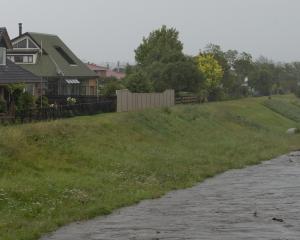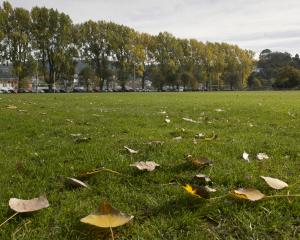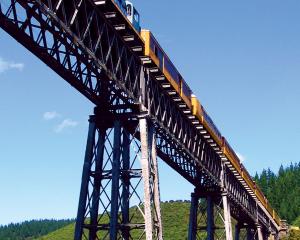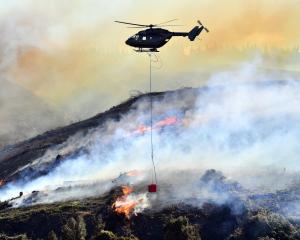More than 200 insurance claims have been filed by Otago and Southland residents and thousands more are expected after Wednesday's earthquake, the biggest recorded since 1931.
Experts say the damage could have been much worse.
The "rolling" 7.8 magnitude earthquake, at 9.22pm on Wednesday, centred 12km beneath Dusky Sound, broke windows and cracked ceilings and walls.
There have been at least seven strong aftershocks, including four yesterday afternoon - one measuring 5.3 at 12.24pm; another measuring 5.6 20 minutes later, followed by two 5.1 quakes at 1.30pm and 2.13pm.
Earthquake Commission (EQC) insurance manager Lance Dixon said 250 claims had been lodged by last night.
He expected the number to rise to "1500 to 2500" over the coming weeks.
More than half the claims had come from Invercargill and a further third from Dunedin.
Queenstown's Alpine Aqualand hydroslide was closed temporarily yesterday as a precaution.
With the fast slide already closed because of design concerns, the slow slide's closure was a "precautionary step . . . to check for any damage to the fibreglass structure", Lakes Leisure facilities manager Cam Sheppard said.
KiwiRail said trains south of Oamaru and through the Buller Gorge were halted from 9.30pm on Wednesday while lines were checked, but no damage was found.
The lines were cleared by midnight for trains to continue.
One train on the main south line between Christchurch and Invercargill and two trains in the Buller Gorge were delayed.
Aerial surveys yesterday revealed little damage apart from several landslips in the Dusky Sound area of Fiordland, Southland Civil Defence emergency management group controller Neil Cruickshank said.
"This was a very large earthquake and it will have shaken many people out of complacency," he said.
Department of Conservation Te Anau acting area manager Andrew Cudby said an aerial inspection revealed little damage.
Staff on Resolution Island near the epicentre were "shaken but not stirred".
Walks in the area would be inspected in the coming months.
A handful of registered walkers in the area were expected out last night, he said.
Southland District Council chief executive David Adamson said engineers would check bridges in the area for signs of structural damage.
The initial quake triggered an alert from the Pacific tsunami warning centre in Hawaii.
Only two small waves were recorded about 10.30pm - a 30cm wave at Dog Island near Bluff and a 17cm wave at Jacksons Bay on the Fiordland coast.
The tsunami warning was then cancelled.
Institute of Geological and Nuclear Sciences geologist Dr Simon Cox, of Dunedin, who flew over the area yesterday, said he was "puzzled" by the lack of slips compared with the August 22, 2003, quake in Doubtful Sound, just north of the Wednesday quake's epicentre.
"It appears one possibility was that the main energy has been sent offshore, or the epicentre was in a different position to what we thought. It is like putting together a jigsaw puzzle. We won't know what we have for a few months."
Fellow GNS geologist Phil Glassey, of Dunedin, said if a similar magnitude earthquake had hit earthquake-prone Wellington during daylight hours "hundreds of people would have been killed".
Despite the magnitude and shallow depth of Wednesday's quake, the main thrust of the Pacific Plate and the Indo-Australian Plate was sent in a southerly direction, lessening the impact.
Te Anau Fresh Choice owner-operator Keith Cullen said $100 worth of stock was damaged in the earthquake.
Shelves and stock had to be wiped down after fizzy drink sprayed far and wide from damaged bottles.
Damage in the supermarket in the 2003 earthquake amounted to $3000.
Liam Brunton, of Milford Sound, was watching television when the earthquake hit.
"It was like being in a carnival ride," he said.
"It wasn't a sharp jagged roll - it was more of a slow, rolling motion."
Ida Valley resident Rebecca Flannery reported "half a dozen" cracks - up to 60cm long - appearing in her mud brick house as a result of the earthquake.
"It is the earthquake area down here . . . they are nothing new, but this one was a fair big one."
Southland police reported a fallen power pole in Otatara and a burst water main on Winton's main street.
The Dunedin Town Hall clock, the University of Otago registry clock and the clock on top of the Waitaki District Council's headquarters all stopped just before 9.25pm.
Dunedin City Council maintenance and projects manager John Varney said the 129-year-old town hall clock in the Octagon "is a faithful old servant but it doesn't like earthquakes".
The time was reset again exactly 12 hours later because "it is easier to do it at the same time".
The Waitaki council's headquarters clock was returned to its correct time yesterday by John Mather, from Mathers Jewellery and Time.
The clock's long pendulum caught on the housing of the clock and the problem was easily fixed, Mr Mather said.












